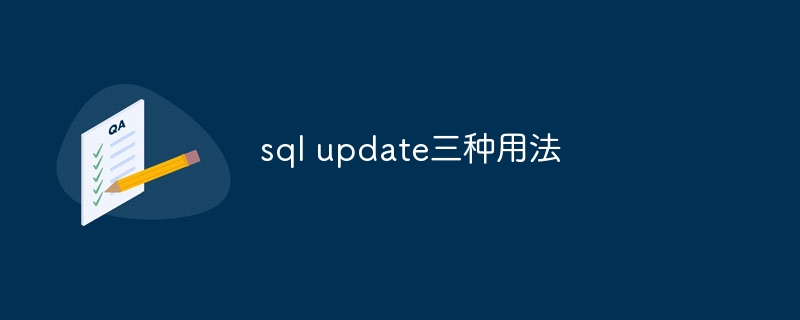

SQL Update has three usages, specific code examples are required
SQL (Structured Query Language) is a programming language used to manage relational databases. In SQL, the Update statement is used to modify existing data. Its basic syntax is UPDATE table name SET column name = new value WHERE condition . In this article, we will introduce three common uses of the SQL Update statement and provide specific code examples.
1. Update a single record
The first usage is to update a single record. In this case, use the Update statement to directly specify the target table, target column, and new value to be updated. The following is a specific example:
UPDATE students SET grade = 'A' WHERE student_id = 1001;
In the above example, we assume that there is a table named students, containing columns student_id and grade. We want to update the grade of the student with student_id to 1001 to 'A'. Using the Update statement, we can specify the target table as students, the column to be updated as grade, the new value as 'A', and add a WHERE clause to qualify the condition as student_id = 1001.
2. Batch update records
The second usage is to update records in batches. In some cases, we may need to update multiple records at once. The following is a specific example:
UPDATE students SET grade = 'A' WHERE grade = 'B';
In the above example, we set the target table, target column and new value to students, grade and 'A', And use the WHERE clause to specify the condition to be updated as grade = 'B'. This means we will update all records with grade as 'B' to 'A'.
3. Use subquery to update records
The third usage is to use subquery to update records. Sometimes, we may need to update records in a target table based on the results of another table or query. The following is a specific example:
UPDATE students
SET grade = 'A'
WHERE student_id IN (
SELECT student_id
FROM scores
WHERE score > 90
);In the above example, we set the target table, target column, and new value to students, grade, and 'A'. In the WHERE clause, we use a subquery, which selects the student_id of students whose scores are greater than 90 points in the scores table. This means we will update the grade to 'A' for all students that appear in the subquery results.
Through the specific examples of the above three usages, we can better understand the usage of the SQL Update statement. In practical applications, we can flexibly use the Update statement to modify the data in the database according to specific needs and conditions.
Summary:
The above are three common uses of the SQL Update statement. I hope that through these specific code examples, readers can explain and understand the use of the SQL Update statement more clearly.
The above is the detailed content of Usage of three different SQL Update statements. For more information, please follow other related articles on the PHP Chinese website!




